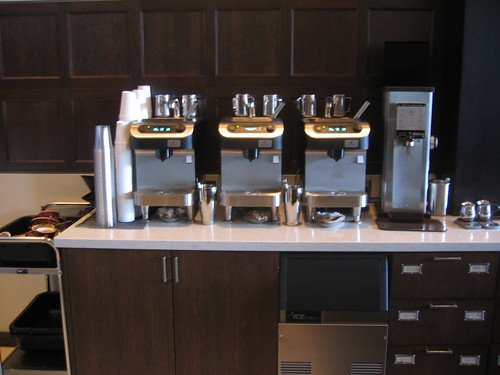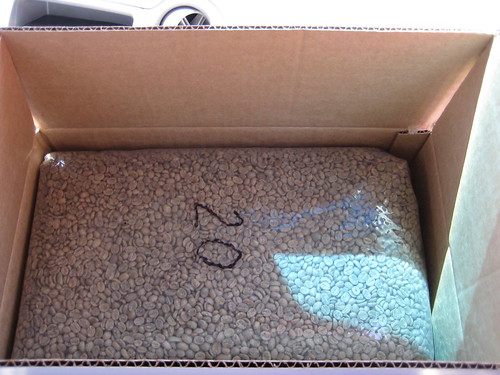10. Water - There are times when water plays an issue in what tastes are coming from a brew. Use good water, filtered, or even bottled if you are not sure. Sample different waters and compare.
9. Grind - The grind is off or worse, your blades are dull and worn out. Worn out blades are the most common problem in cafes and frequent home users.
8. Brew time - Over or under steeping can leave you with an undeveloped cup or some unpleasantly bitter or dry notes. Pay attention to time.
7. Temperature - If you have a home drip coffee maker, your temp is probably too low, a common espresso machine, your temp is either way too high or way too low. Either way, check it and eliminate it as an issue.
6. Crop variance - Few coffees will ever be exactly the same throughout an entire offering. The more bags, the more likely there will be some natural crop variance throughout. This is unavoidable in all but the most premium lots.
5. Weather - Humidity or ambient temperature could have played a part in either storage or in creating variance during the production roast. This is an unseen factor which cannot be accounted for by the end consumer.
4. Roaster error - You could write a novel on this point. Needless to say, nobody is perfect and sometimes the coffees run the profile but something was wrong. Something wasn't cleaned, an appropriate change was not made to compensate for environmental variation, or worse in that the roaster could not identify the error even post roast. I know some roasters just cannot handle the wet and high grown coffees so they end up with raw tasting sharp astringency and other weird flavors that vary batch to batch.
3. Brew method - Everyone has different evaluation methods. We cup and then vac pot, (then espresso for some roasts) but that's not common. We heard one roaster uses a technivorm for evaluation but most people just use traditional cupping which often doesn't taste like your home brewer's profile. For espresso, it's as simple as the difference between using a GB5 and a Robur vs an E61 with a Jolly, don't expect the same tastes.
2. Age - Coffee gets old. Roasts age and fade in the weeks after roast but more interestingly, unroasted coffees fade and change. So X roaster prints a thousand fancy labels and you buy one bag of retail coffee the first month it arrives. Buying a second retail bag three months later, the chances are it won't be the same but the label won't change because it's cheaper to print labels ahead. Simple common sense tells us that as raw coffee fades in color, something is lost so it should be a given for anyone who reads this blog to accept
coffee gets old.
1. Personal palette - I think of some of our west coast friends who caught the light roast bug. They constantly use terms they are familiar with like 'jolly rancher' or 'stone fruit' which is probably accurate but not everyone will relate. Tasting notes can be very subjective simply because your vocabulary is based on your own personal experiences. Worse, some cuppers give you notes that are romantically inclined and can border on romantic imagery vs the impression of a distinct taste.
Personal palette is most often the reason or excuse given when you buy a bag and don't get the taste descriptors. This can often be followed by either delicate or often abrasive critique of your brew method/water/personal ability depending on how customer service is at that roaster. Let's put it simple, chances are you won't get the bag descriptors in your cup.
It begs the simple question, how useful are taste descriptors on the bags?




